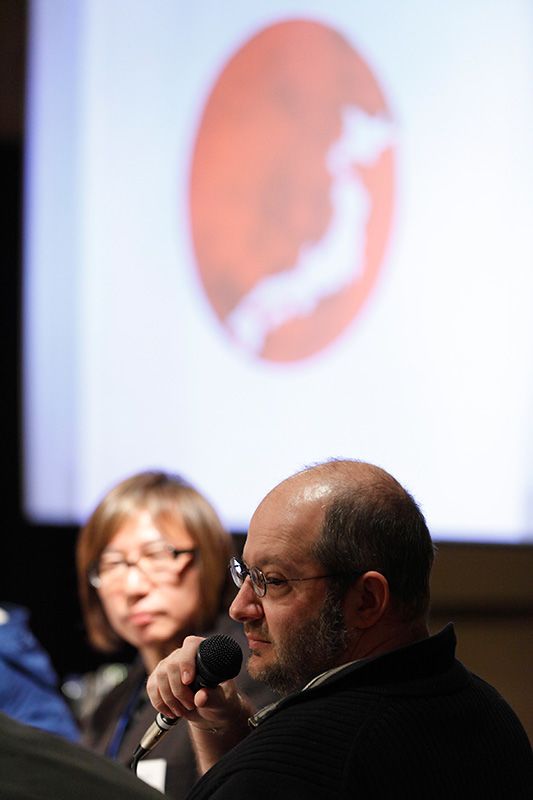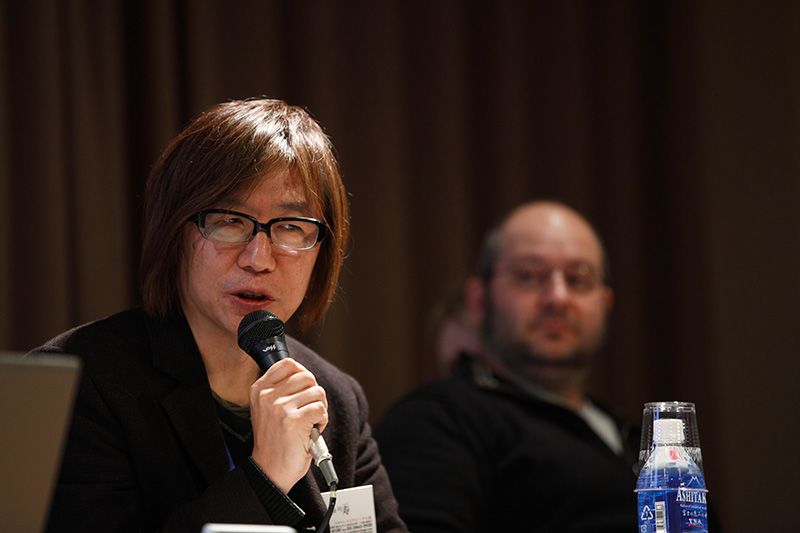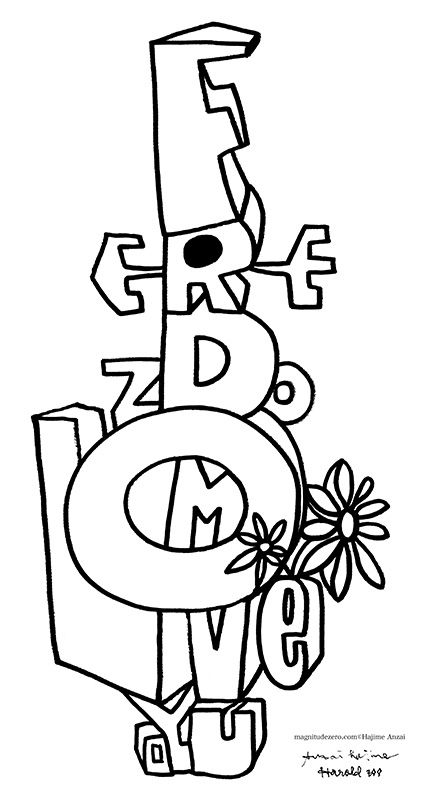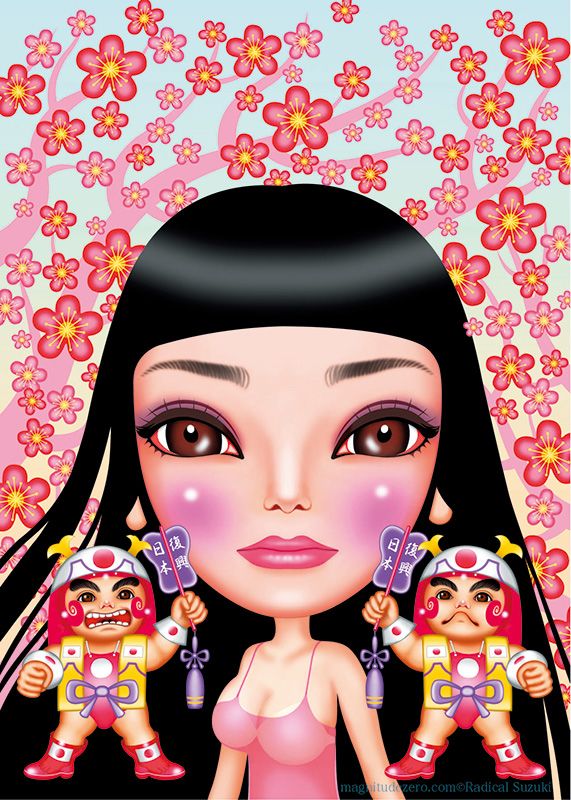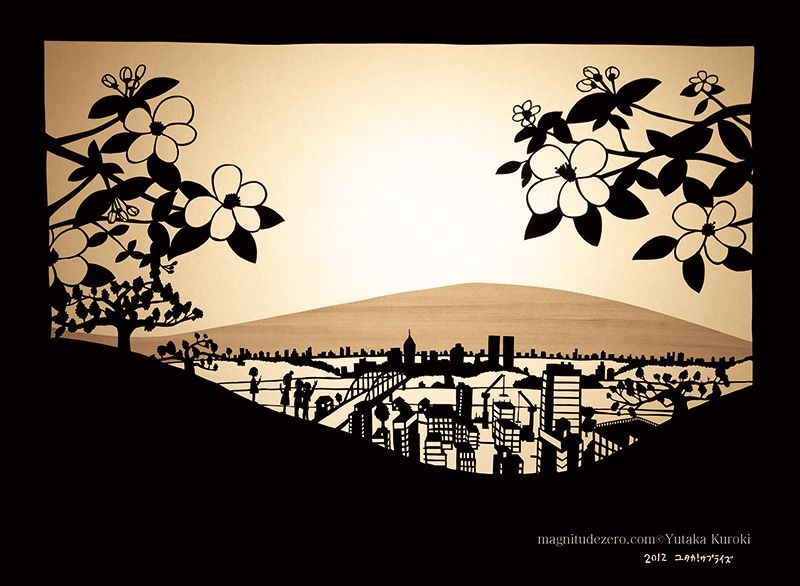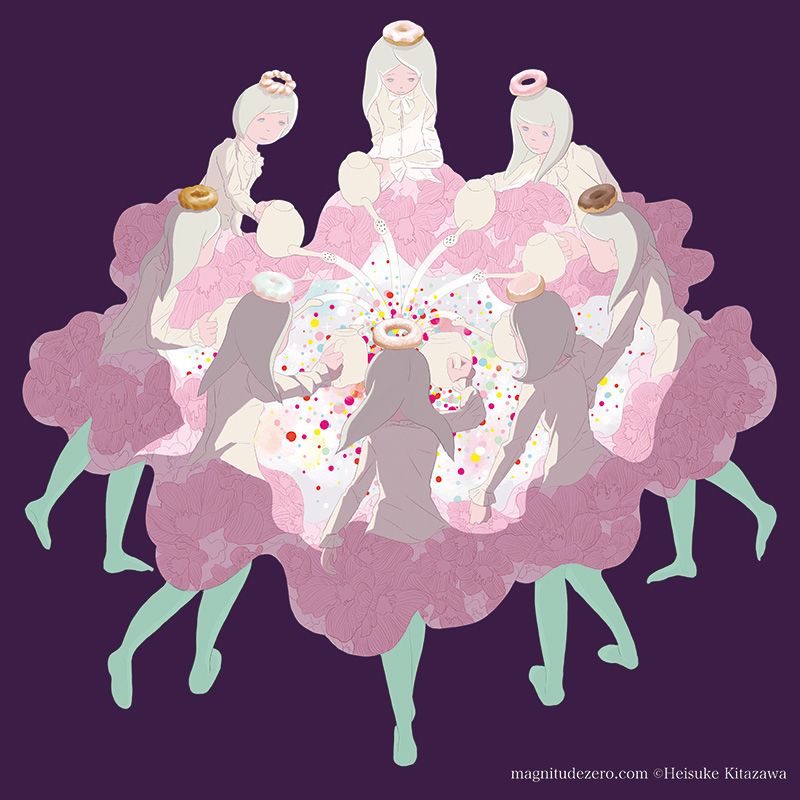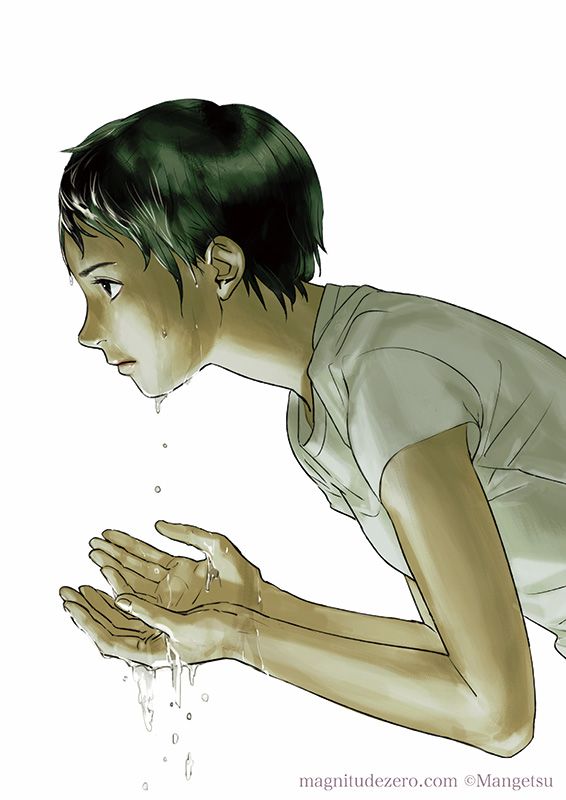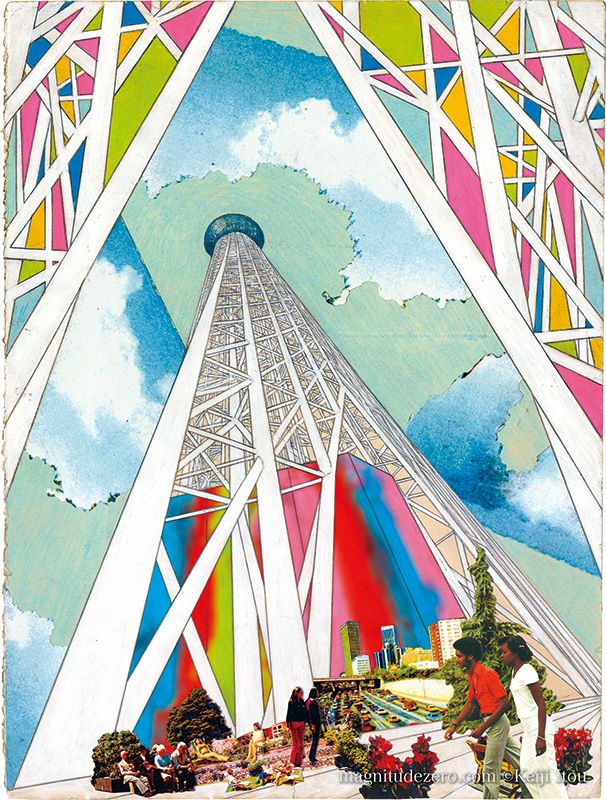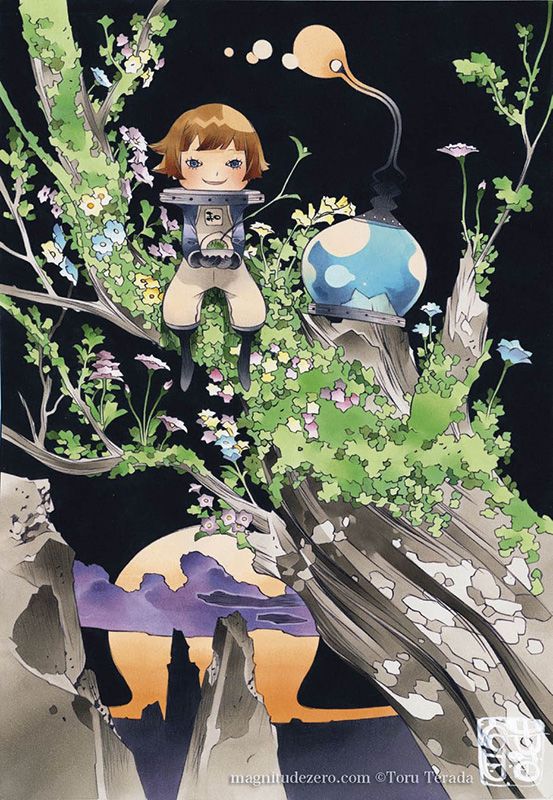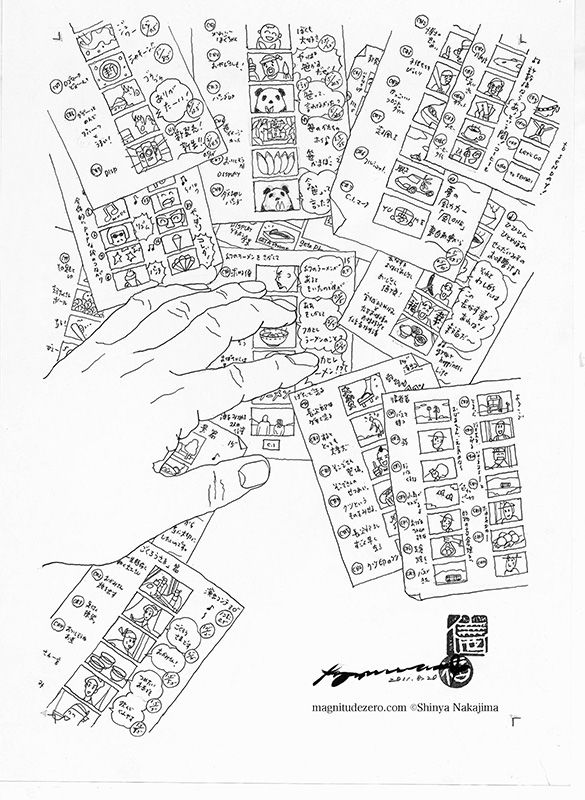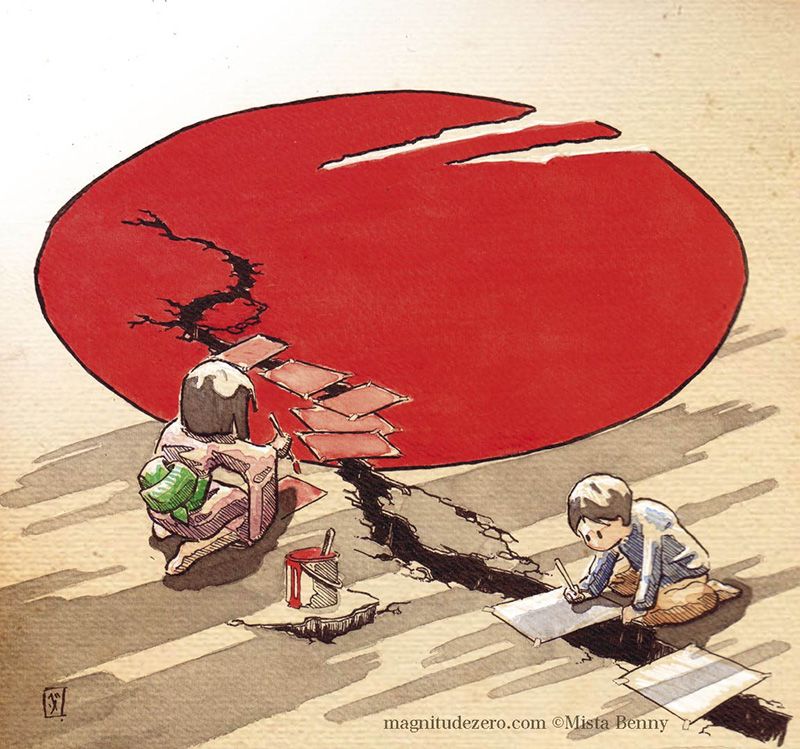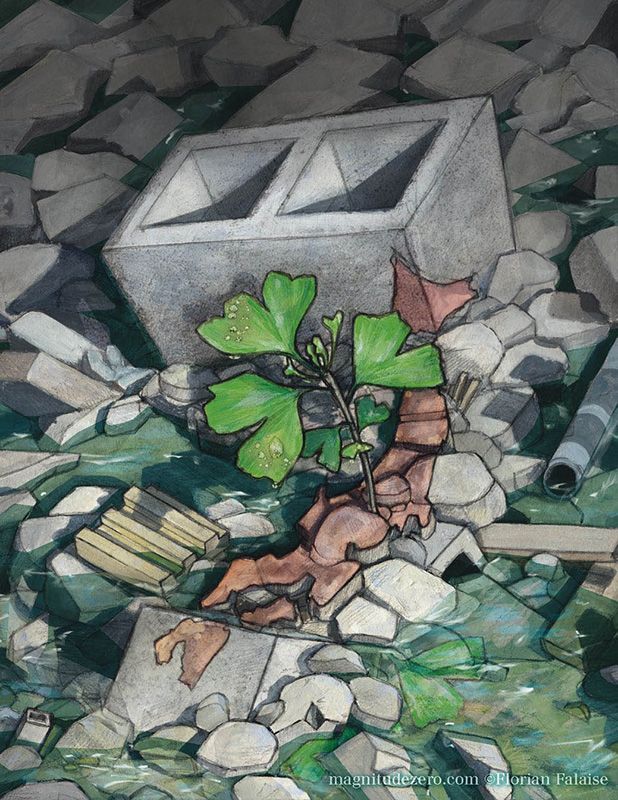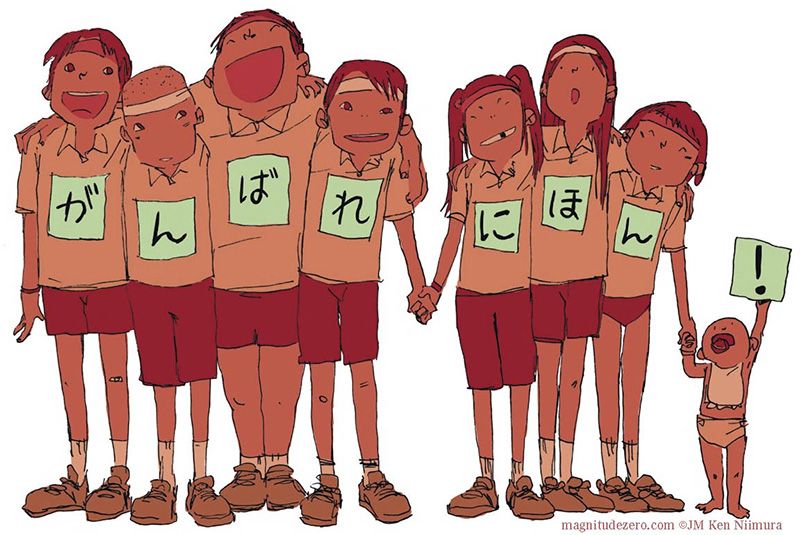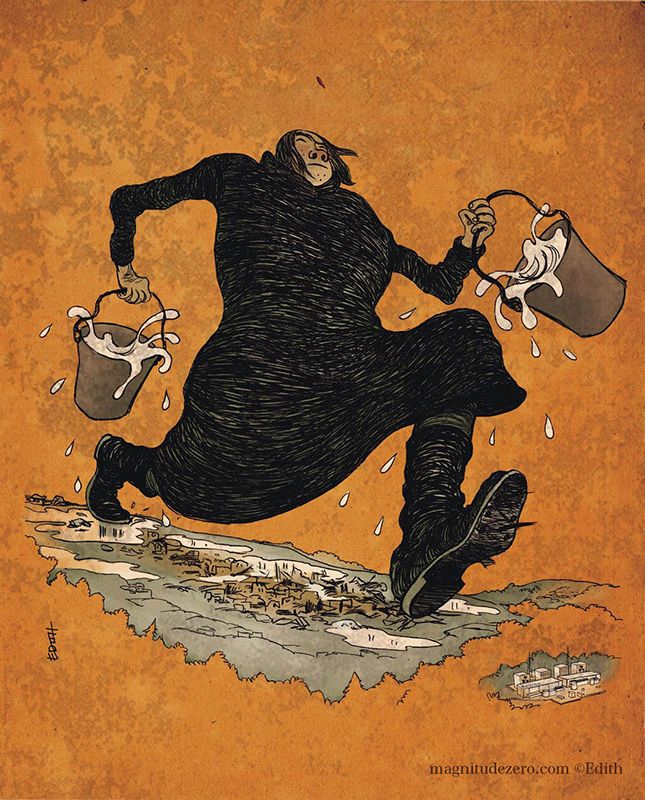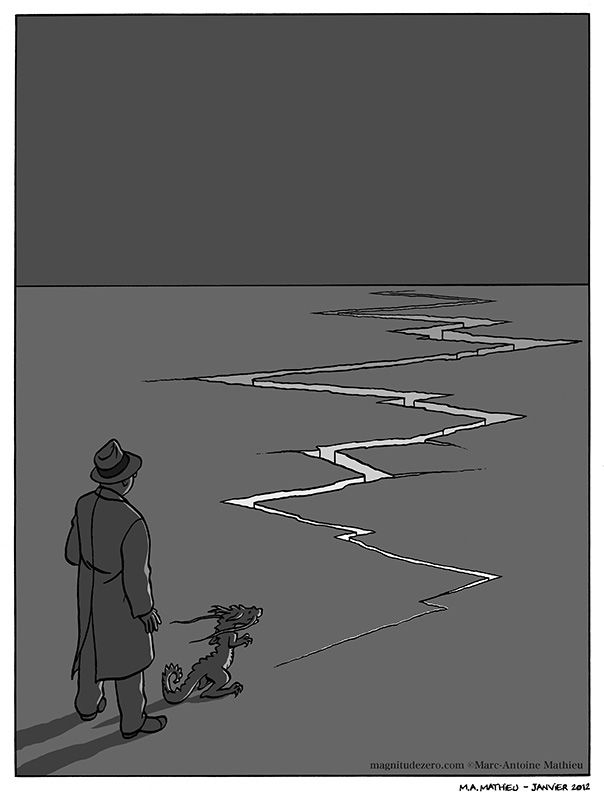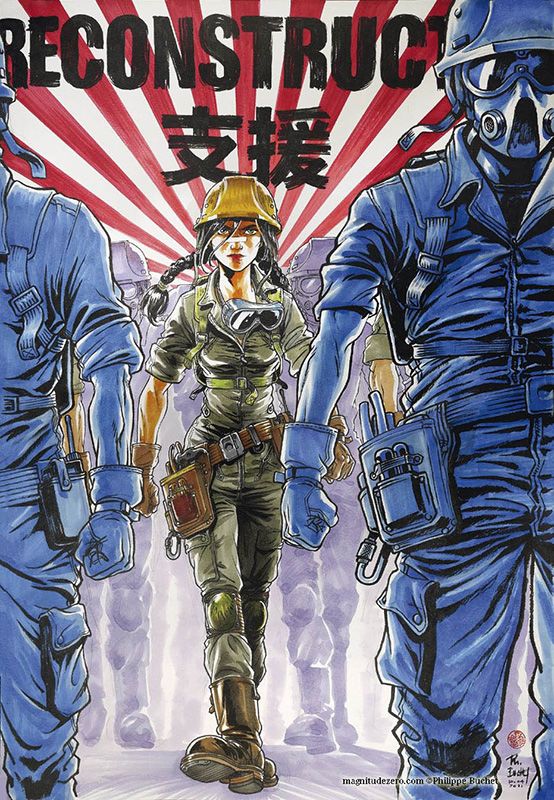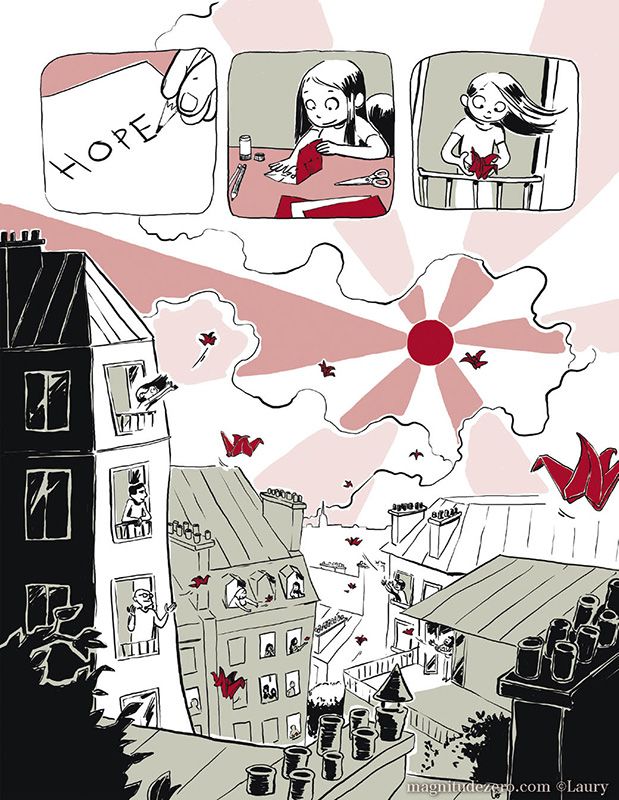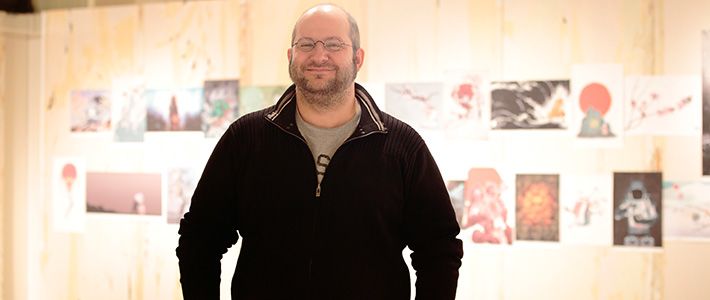
Kyoto at the Forefront of the Manga World
The Role of Manga in Postdisaster Japan
Culture- English
- 日本語
- 简体字
- 繁體字
- Français
- Español
- العربية
- Русский
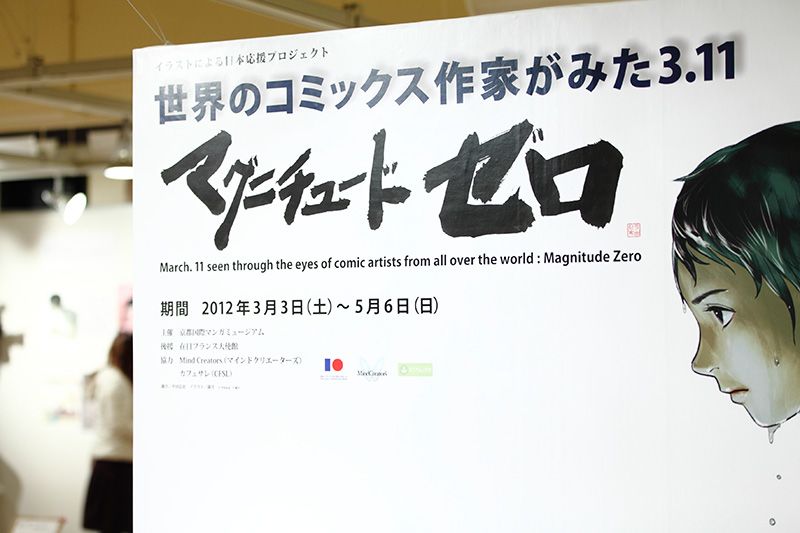
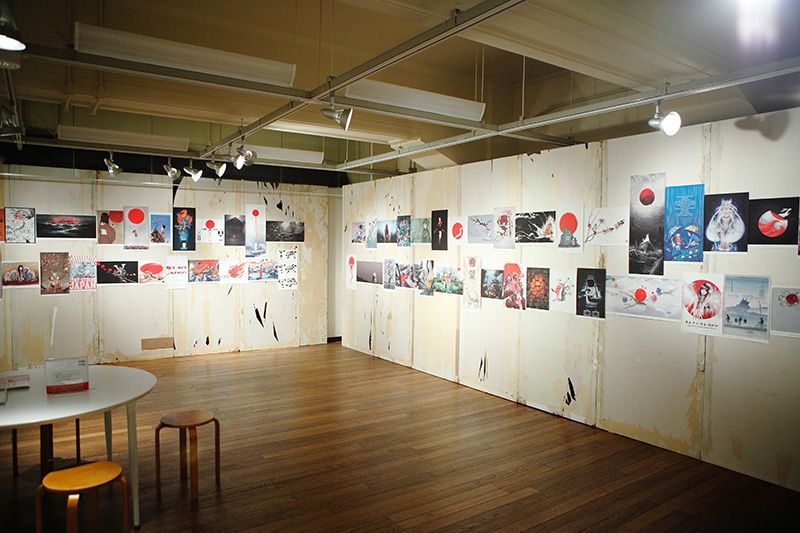 From March 3, 2012, until May 6, the Kyoto International Manga Museum hosted an exhibition of works from a recently published collection called Magnitude Zero, showing how comic artists from around the world have responded to the tragic events in Tōhoku on March 11, 2011.
From March 3, 2012, until May 6, the Kyoto International Manga Museum hosted an exhibition of works from a recently published collection called Magnitude Zero, showing how comic artists from around the world have responded to the tragic events in Tōhoku on March 11, 2011.
At a talk to mark the opening day of the exhibition, French bande dessinée(*1) artist Jean-David Morvan and Japanese manga artist Shiriagari Kotobuki discussed “What Manga Can Do for the World.” Despite the continuing tendency to regard manga as simple entertainment, the talk and the exhibition that followed showed the surprising range of ways in which figures from the world of manga have responded to this unprecedented disaster.
French Artists Lead the Response
For people in Japan, the disaster served as a reminder of the importance of community and the strength that comes from standing together. The outpouring of assistance and encouragement, not just from within Japan but from around the world, underlined the solidarity that transcends national borders.
In a sense, Magnitude Zero was one of the results of this realization. The catalyst for the book and exhibition was Magnitude 9, a collection of illustrations to support Japan’s disaster recovery efforts that was released in France in September 2011, six months after the disaster.
Magnitude Zero combines works by foreign illustrators originally included in Magnitude 9 with works by Japanese illustrators. At the same time as showing appreciation to the artists from around the world who contributed to Magnitude 9, the exhibition also conveyed a sense of the determination of people in Japan to rebuild from nothing.
Magnitude 9 organizer Jean-David Morvan was in the Kichijōji area of Tokyo when the earthquake hit. He remembers the violent shaking, and the shock of seeing the horrific images of the tsunami on television. Almost immediately, he began to think of ways to help. He contacted his colleague Sylvain Runberg, another Tokyo resident, and as well as CFSL.net, a French community site for illustrators, launching a blog project and calling for illustrations to bring support to the disaster victims. The response was overwhelming, with 2,700 illustrations submitted within three weeks, of which 250 were selected for publication in Magnitude 9.
Morvan credits the impressive response to the inspiration that illustrators around the world have drawn from Japanese manga and the affection for Japan that many artists feel as a result. The fact that manga can be produced more cheaply and quickly than video and film was another factor that made it possible to get the messages of encouragement to Japan promptly.
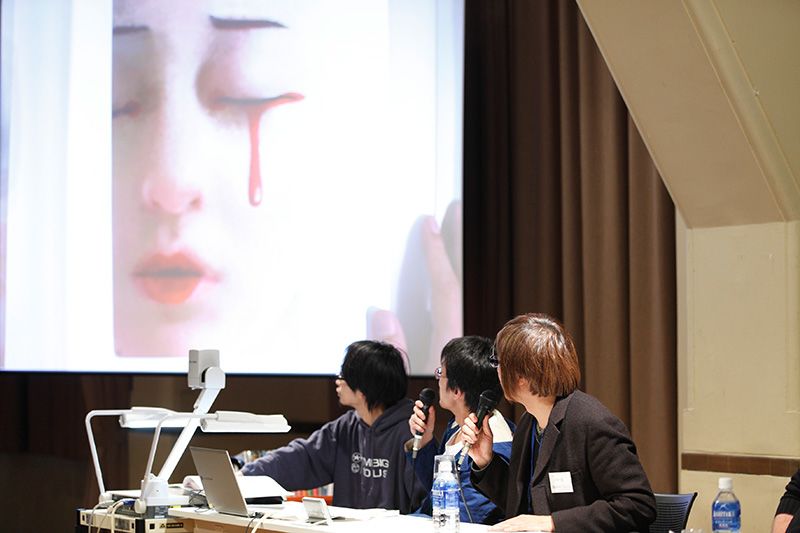 In many cases, foreign artists tackled the horror of the disaster more directly than would have been possible in Japan. Among the images submitted to the blog were some, including one of a girl shedding tears of blood, that would have been too shocking for publication in Japan. Whether or not these images suggest a different sensibility or greater freedom of expression overseas than in Japan, they were certainly the product of a different perspective and greater distance from the devastation.
In many cases, foreign artists tackled the horror of the disaster more directly than would have been possible in Japan. Among the images submitted to the blog were some, including one of a girl shedding tears of blood, that would have been too shocking for publication in Japan. Whether or not these images suggest a different sensibility or greater freedom of expression overseas than in Japan, they were certainly the product of a different perspective and greater distance from the devastation.
This difference in perspectives meant that it was essential for Morvan to take great care in selecting the works for the project. “In putting the project together, I’m confident we did all we could to be considerate of people’s feelings. We decided not to touch the nuclear issue, for example. We were worried that the issue would overwhelm everything else and draw attention away from other aspects of the disaster, especially since nuclear power is a big issue in France as well. We wanted to stay focused on our main purpose, which was to express our sympathies and condolences.” This consideration and restraint was in marked contrast to the frenzied sensationalism of much of the reporting of the nuclear accident in other parts of the foreign media.
The Japanese Manga Community Springs Into Action
The response of the manga community in Japan was impressively swift, according to Itō Yū, a researcher at the Kyoto International Manga Museum. Manga artists, publishing companies, and bookstores got to work almost immediately after the earthquake.
Inoue Takehiko, famous as the creator of such hits as Slam Dunk and Vagabond, started work the very day after the quake, when he started posting a series of illustrations on Twitter of people smiling, which he aptly titled smile.
Also hatched the day after the earthquake was Jishin no baka yarō!! MDS sakusen (Screw You, Earthquake!! MDS Mission), a project spearheaded by Miyake Ranjō and featuring contributions from well-known manga artists. Despite an overwhelming sense of powerlessness in the face of such an unprecedented tragedy, the artists decided that they had a duty to do what they could as entertainers. The result was a steady stream of illustrated messages designed to encourage victims of the disaster.
Publishing companies also responded with sensitivity to people’s concerns about the earthquake and nuclear accident.
Less than two months after the earthquake, Saitō Takao’s 1970s manga series Survival, which tells the story of a teenage boy who survives a massive earthquake, was reissued and prominently displayed in convenience stores, with part of the proceeds going to help recovery efforts.
Within two weeks of the nuclear accident, Yamagishi Ryōko’s Phaethon, first published in 1988 after the Chernobyl disaster, was made available for free download. The work, which addresses the pros and cons of nuclear energy, has proved popular with a new generation of readers. (Phaethon is available in Japanese only.)
Shiriagari Kotobuki was one of the artists who took part in the Jishin no baka yarō!! MDS sakusen project. He says he was taken aback by the unprecedented speed of the response. “With the exception of Yamagishi Ryōko, manga artists have not really spoken out on social issues in the past. Even after 9/11, there wasn’t much response in manga. But this time, with all the concerns over radiation, things have hit closer to home. And thanks to Twitter and blogs, manga artists have been able to publish their own ideas and projects without going through a publishing company. That’s made a huge difference.”
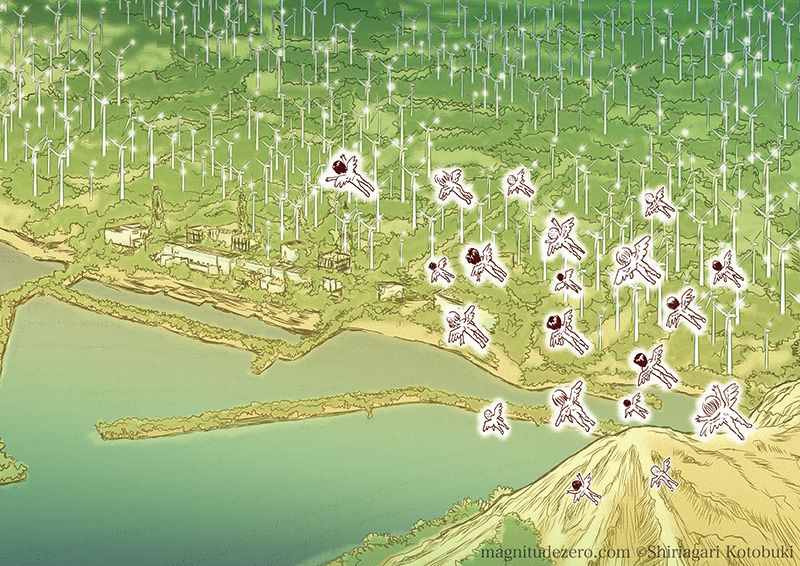 Drawing by Shiriagari Kotobuki
Drawing by Shiriagari Kotobuki
Looking Ahead to the Future
Shiriagari himself has depicted the situation in postdisaster Japan via a four-frame manga serial titled Chikyū bōei ke no hitobito (Defenders of the Earth) that has been appearing in the evening edition of the Asahi Shimbun since April 2002. “I have always tried to depict the reality of everyday life in my work,” he explains. “So it would have been impossible for me to ignore the earthquake. But I knew that I needed to tread carefully. People see the situation from all kinds of different perspectives. If I go ahead and claim that nuclear energy is safe, I’m just going to make other people angry. And no one likes to be laughed at. I don’t want to hurt anyone’s feelings, so I always make sure that it’s the main character that gets laughed at, if anyone.”
Shiriagari’s postdisaster strips were compiled in Ano hi kara no manga (Manga Since That Day), published by Enterbrain Inc. in July 2011. One of the pieces included in the book, Umibe no mura (Village by the Sea), originally appeared in the monthly magazine Comic Beam immediately after the disaster, going on sale on April 12, 2011. The manga is set 50 years after a massive earthquake, in a world in which people have shifted to more sustainable energy use and more modest lifestyles. The manga met with a huge response from the reading public.
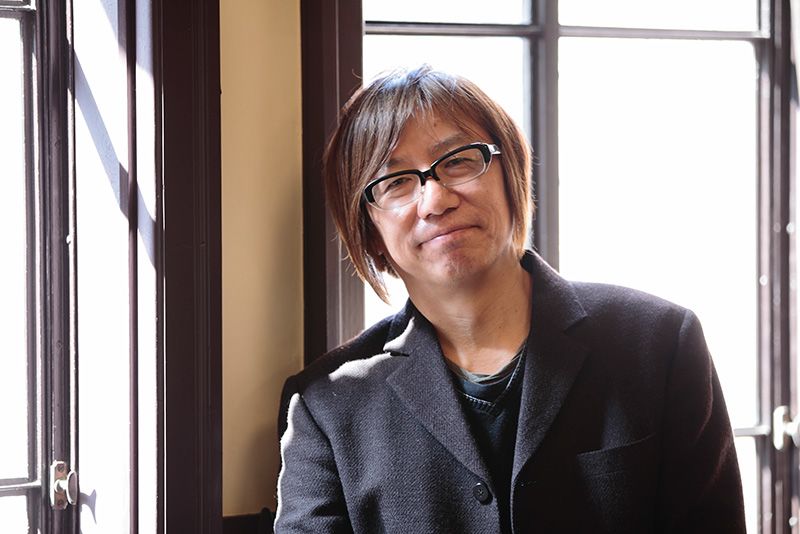 “I asked myself what a manga artist could usefully do in a situation like this. I thought about the scientists who were trying to explain the impact of the accident in the media. They come out with all these numbers. Some people accept them, some people refute them, and other people don’t really care either way. It’s that mixture of different people with different views that creates the atmosphere of the times. That’s what I wanted to depict. I felt that manga needed to show the daily reality that went beyond the scientists’ figures. Despite all the hardships and pain we’re living through now, there are still plenty of reasons for hope if we look ahead 50 years into the future. That was my thinking when I drew Umibe no mura.”
“I asked myself what a manga artist could usefully do in a situation like this. I thought about the scientists who were trying to explain the impact of the accident in the media. They come out with all these numbers. Some people accept them, some people refute them, and other people don’t really care either way. It’s that mixture of different people with different views that creates the atmosphere of the times. That’s what I wanted to depict. I felt that manga needed to show the daily reality that went beyond the scientists’ figures. Despite all the hardships and pain we’re living through now, there are still plenty of reasons for hope if we look ahead 50 years into the future. That was my thinking when I drew Umibe no mura.”
Manga has its own distinctive role to play. The job of politics is to deal with the major issues of the day. Journalism keeps problems in the public eye, and science works to analyze the situation and find a solution. Manga, by contrast, can play an important role by expressing compassion for victims, and showing a hopeful picture of the future—even if it is only an imagined vision.
Manga brought enjoyment and smiles to readers at a time of anxiety, anger, and grief. Manga prompted people to think seriously about the difficult subjects of nuclear power and radiation. It even transcended language and national borders, bringing together people from around the world. The expressive powers of manga will continue to play an important role in the years to come.
(Originally written in Japanese by Yata Yumiko. Photographs by Itō Makoto. With grateful acknowledgement for interview help and photos to the Kyoto International Manga Museum, Mind Creators, and the Embassy of France in Japan.)
(*1) ^ Bande dessinée is a French term that refers to cartoons in general, but also represents a particular genre of cartoons developed in France and Belgium.
Great East Japan Earthquake manga Twitter France Nuclear Power Plant Accident Recovery Assistance Illustrations Magnitude Zero Kyoto Manga Museum Shiriagari Kotobuki Inoue Takehiko Blog
